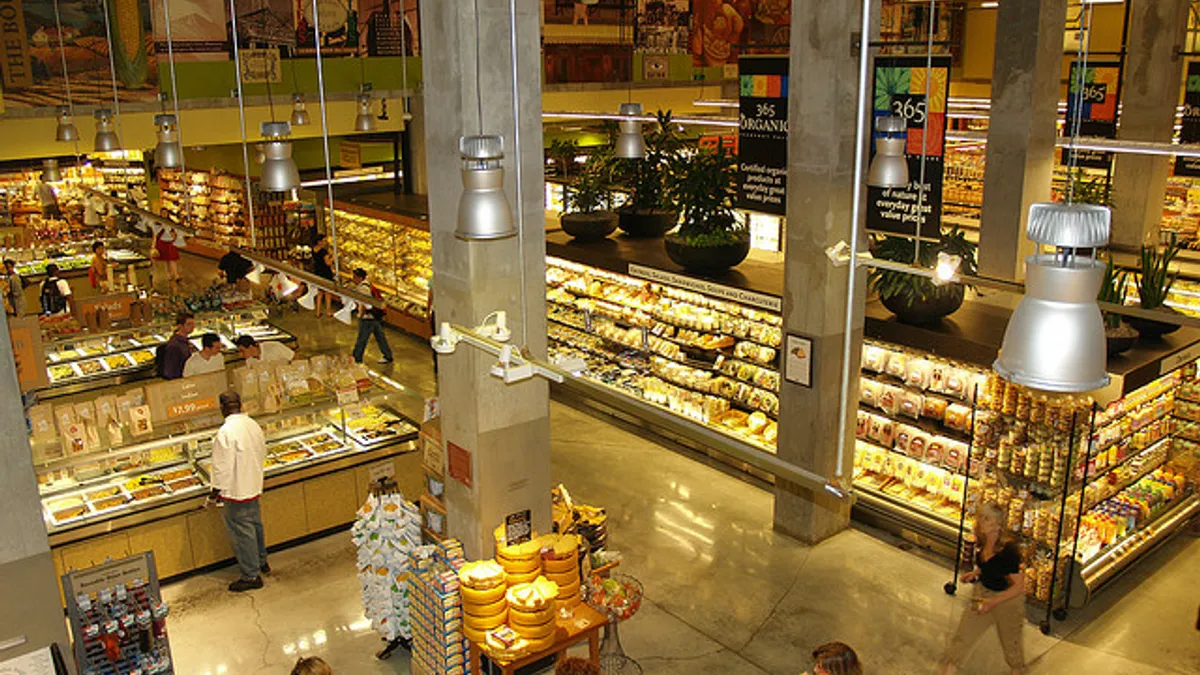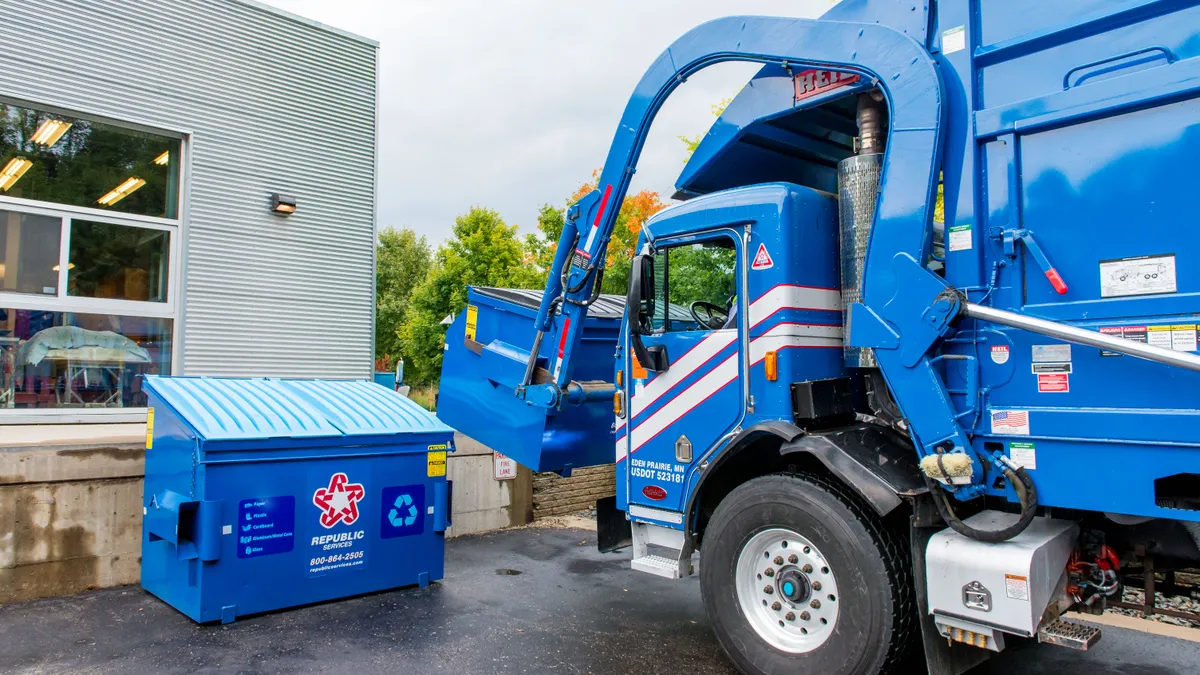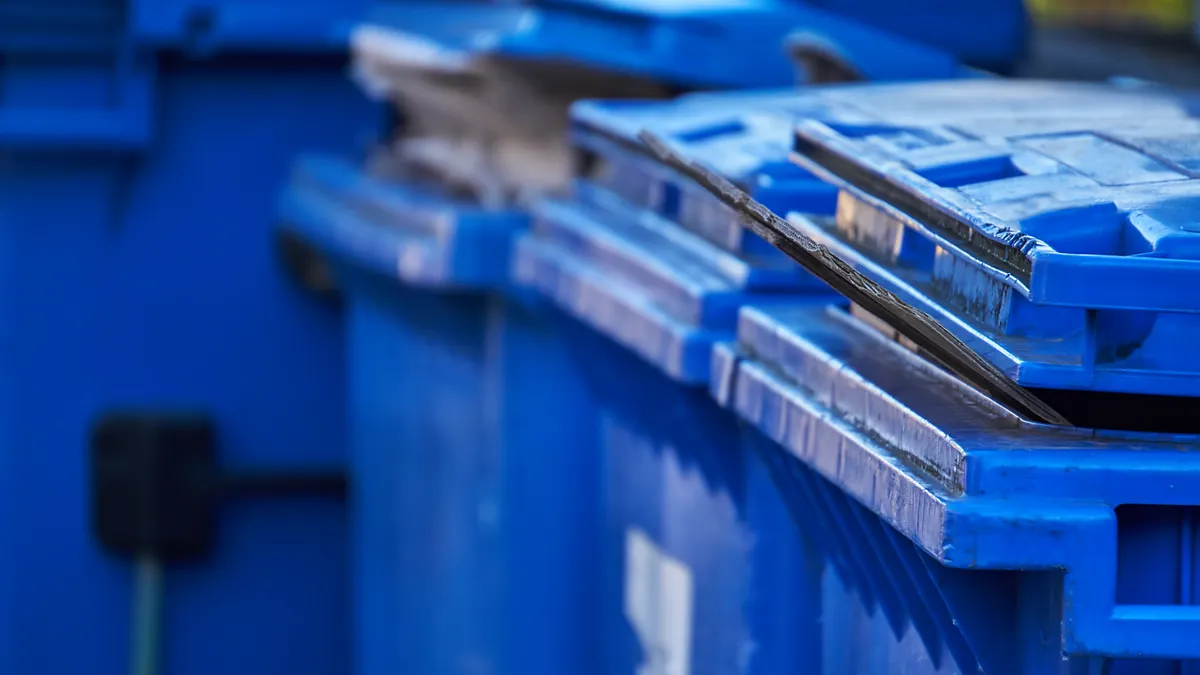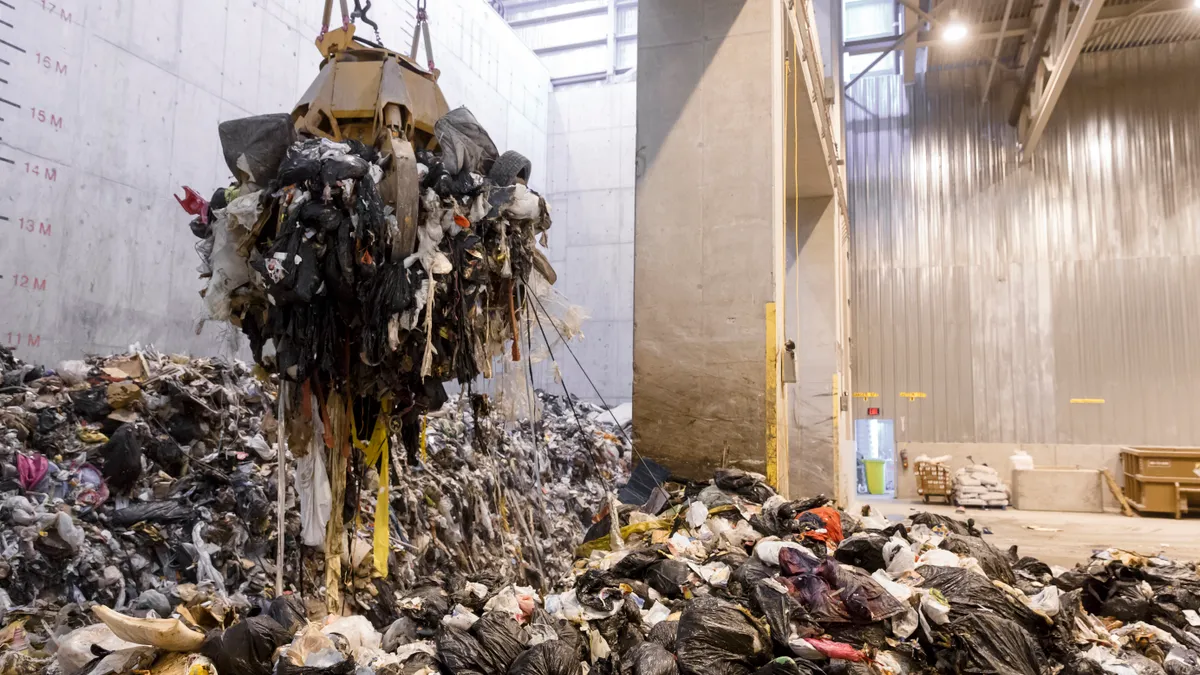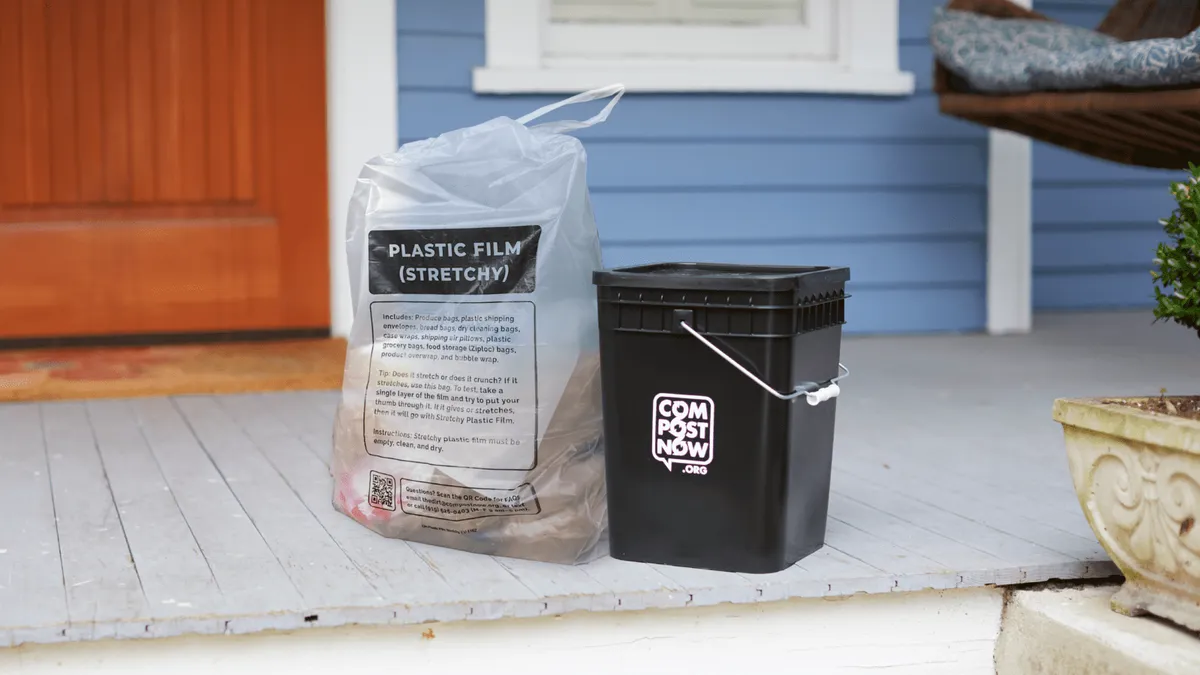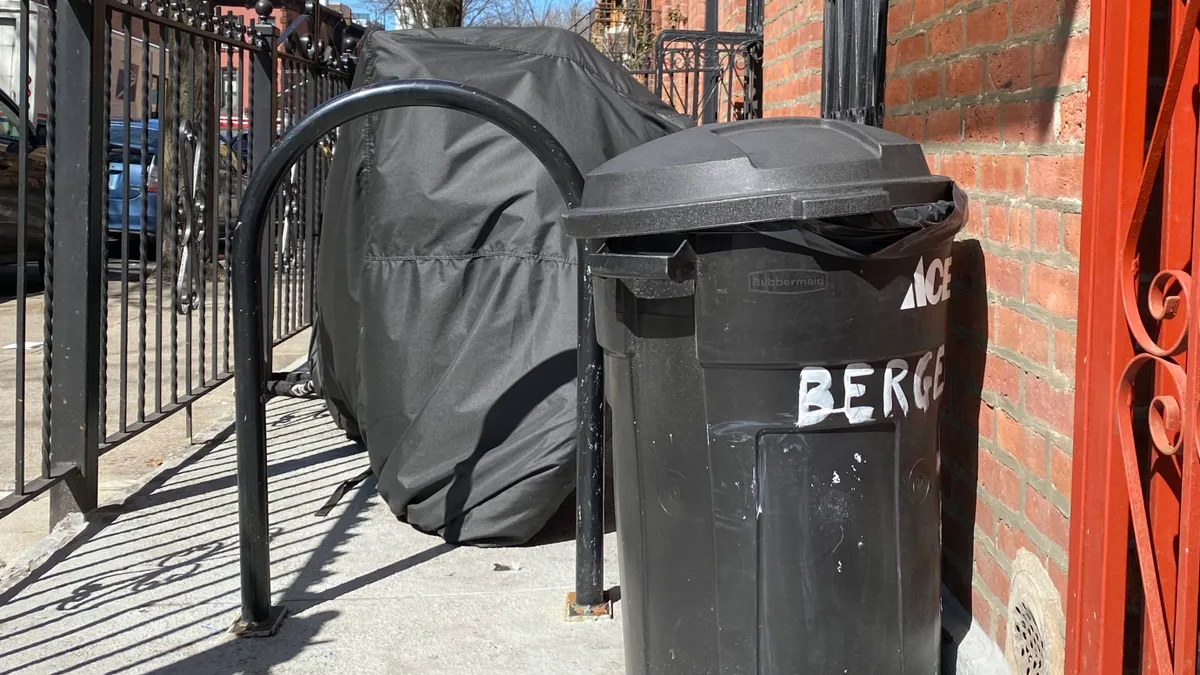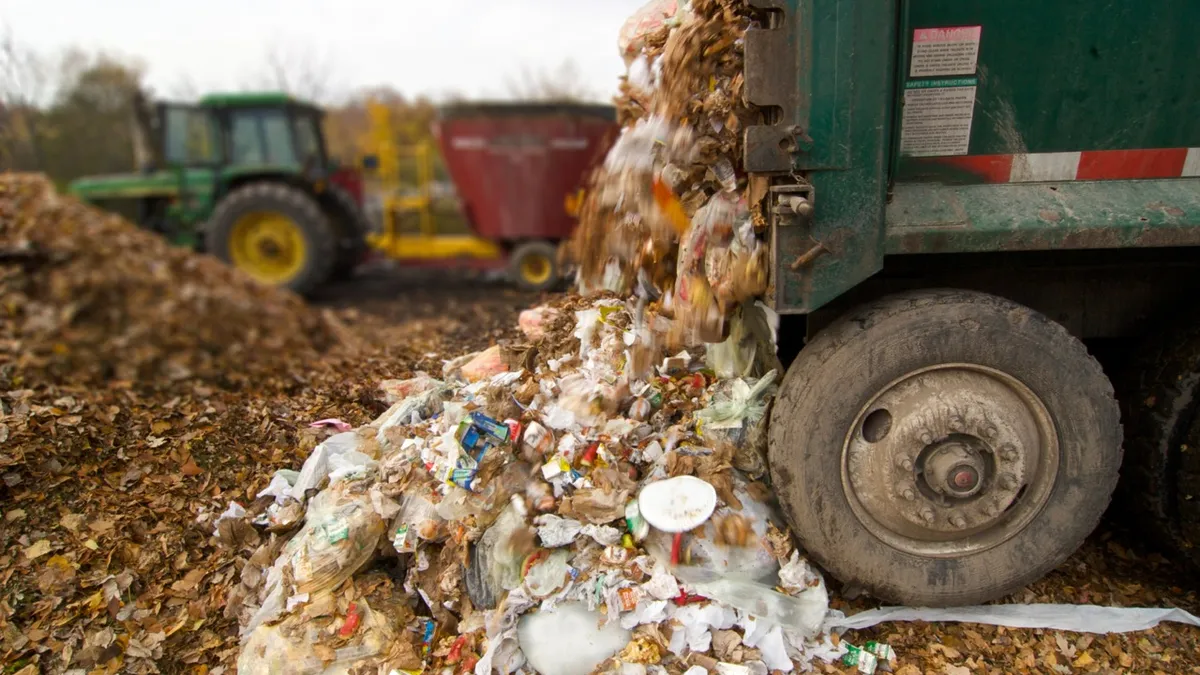For many consumers, grocery store buffets and salad bars are a convenient back-up plan when they don't want to cook dinner. Yet in the food donation world, they have become a symbol of the underlying liability confusion that some say is hindering the organic waste diversion movement.
While the main questions around ubiquitous self-serve stations involve food safety, these same fears about people getting sick from donated food are at the heart of larger liability concerns. President Bill Clinton signed the Bill Emerson Good Samaritan Donation Act into law to help resolve these types of liability questions and now, more than 20 years later, some say it may be time for an update to reflect the new realities of food recovery.
The finer points of food donation may be new to some in the waste and recycling world, but that has begun to change with the EPA’s goal of halving food waste by 2030. As local governments set their own organic waste diversion goals, and some new contracts even include food donation requirements, many are looking for the industry to play a larger role farther up the recovery hierarchy.
Like most other aspects of the ongoing organics conversation, this one is far from simple.
The hesitations around rescuing buffet-style food
Despite protections under the Emerson Act, liability remains a commonly cited concern among potential donors. In the Food Waste Reduction Alliance’s most recent annual survey, this concern was raised by 25% of retail/wholesale respondents and 39% of restaurant respondents — many of whom worry about the risks of self-serve buffets. While no comprehensive statistics are available on how much of this food is being put out each day, it can be estimated that there are at least more than a thousand restaurants, grocery stores and wholesale markets serving up bulk pans of vegetables and grilled chicken around the country.
Steve Dietz, director of business development for Tennessee-based Food Donation Connection, estimates that his organization has recovered upward of 6 or 7 million pounds of this food. Right now, meals from these self-serve stations only account for about 10% of the food they recover each year and Dietz wishes that was higher.
"Most of this food that has been made is nutritious, it’s ready to eat," said Dietz. "We deal with almost 9,000 agencies across the country. Many of them — in fact probably a huge number of those — get this kind of food and they say it’s their most valuable, requested kind of food."
For people who aren’t able or don’t have time to cook a full meal, this food can be reheated with nothing more than a microwave. Yet some food banks and health inspectors see it as too risky — which Dietz feels undermines the existence of buffets in the first place.
"I think it’s a double standard if you say certain food is good for one group of people but not for another," he said. "You can sell this buffet food, but you can’t donate buffet food?"
Feeding America, a national network of food banks which many local operations look to for guidance, recognizes the potential confusion. "I think there’s a real opportunity to clarify what local health codes should have in them about safely donating food. Right now, it’s not clear and a lot of health inspectors will err on the side of saying a donation can’t happen without that clarification," said Carrie Calvert, director of tax and commodity policy.
Prepared food does play a part in Feeding America’s efforts to provide billions of meals to hungry people across the country. The organization estimates that it has recovered at least 30 million pounds of prepared food this year so far. The new Starbucks FoodShare program is expected to help add millions more meals in the coming years. Yet when asked for clarification, Feeding America specified why they feel these pre-wrapped sandwiches are different than pans of hot food from the local grocery store.
“Feeding America does not support rescue of prepared food held on a self-service buffet," wrote Calvert via email. “Many self-service buffet bars are unattended. Many of these buffets are not checked regularly for proper temperatures and to be sure the customer is not doing something that can accidentally contaminate the served food product. These foods are seen as higher risk and re-serving this product to a more vulnerable population (elderly, ill or children) is something Feeding America does not support.”
“Feeding America does not support rescue of prepared food held on a self-service buffet."

Carrie Calvert
Director of Tax and Commodity Policy, Feeding America
The organization points to the Conference for Food Protection’s definition of “served food” as the source of this policy. The CFP — which includes members from the food industry, academia and government agencies — defines served food as, “Food that has come into contact with the customer. This does not include food on merchandised display.”
Some believe that this definition is only referring to extra food that has been on a customer’s plate. The co-chairs of the CFP committee behind this language were not available for comment.
Feeding America was one of many stakeholders that participated in the latest revision of the CFP’s food recovery language in 2014. The CFP’s recommendations are then taken under consideration when the U.S. Food & Drug Administration periodically revises the federal Food Code. State agencies can choose which portions of the code to adopt into their own language and local health inspectors follow it accordingly.
Awareness and standardization may be key
Before the Emerson Act was passed, liability laws differed between states and vast quantities of food were being wasted for fear of potential litigation. The law aimed to provide clarity by protecting donors and nonprofit recovery organizations, stating that they "shall not be subject to civil or criminal liability arising from the nature, age, packaging, or condition of apparently wholesome food or an apparently fit grocery product" that is donated "in good faith" through the proper channels.
Regulating the requirements behind those vague definitions has fallen to health inspectors, sometimes with frustrating results.
Dietz said local recovery organizations often call him while trying to navigate questions from inspectors and food banks that may be well-intentioned yet can keep good food from going to those who need it.
He recalled a particularly challenging experience from 2014 when trying to recover prepared food from Whole Foods in Boston. A skeptical local health official first raised questions about ingredient labeling, then allergen warnings and finally temperature controls. This dragged out for more than a year and reportedly led Whole Foods to halt its existing recovery efforts at other area stores as well.
Food For Free, based in nearby Cambridge, MA, had recently begun working with local Whole Foods stores and its recovery operations have not returned to their full level since.
Founded in 1981, Food For Free is one of the oldest food recovery organizations in Massachusetts and distributed 2 million pounds of food in 2015. Executive Director Sasha Purpura said this history has helped give them more credibility when working with potentially wary stores or organizations. Though she said the recent attention toward organics diversion and recovery has drawn more scrutiny to prepared food donations.
“It’s sort of recreated the issues of before. Liability issues used to come up a lot around regular food donation," she said. "It’s a lack of understanding that it can be done safely and how to do it."
"Liability issues used to come up a lot around regular food donation ... It’s a lack of understanding that it can be done safely and how to do it."

Sasha Purpura
Executive Director, Food For Free
Following these strict food safety guidelines, Food For Free has been taking donations of prepared or "served" food and separating it into meal-sized portions that can be reheated in microwaves. Getting donors involved at first was difficult, which points to a larger need for awareness.
ReFED has estimated that more education around donor liability could help divert an additional 95 million meals or 57,000 tons of food. Standardizing donation regulations between states is estimated to have even higher benefits, diverting up to 322 million meals or 193,000 tons.
Though as noted by Purpura, and ReFED, standardizing date labeling regulations — which are cited in some state health codes — could have the greatest effect of all.
“The date thing to me has far greater impact on food waste than the lack of knowledge on Good Samaritan or food safety or anything else," said Purpura.
These issues, and many others, have inspired this latest push to update the Emerson Act.
The path toward updating the system
Earlier this year, the Harvard Food Law and Policy Clinic (HFLPC) and Natural Resources Defense Council released a list of recommendations for how the Emerson Act could be updated to do more in the era of food waste reduction goals. While no recorded cases have been found for litigation around donation that also means there is no legal precedent and too much left up to interpretation.
The path toward implementing some of these recommendations would require legislative approval from Congress. Others could theoretically happen now. For example, no federal agency is in charge of enforcing the Emerson Act — the USDA is seen as the best candidate and could decide to issue clarifying guidance at any time.
The HFLPC also recommends modifying the language to explicitly cover past-date food, allow donations of mislabeled food that has no safety issues and allow donors to give directly to individuals without going through a nonprofit. They also recommend adding protections for nonprofits that sell donated food at a discounted price — such as Daily Table in Boston, founded by the former president of Trader Joe’s.
Food banks and recovery organizations have different opinions on some of these recommendations, but HFLPC Director Emily Broad Leib has made sure they’re all part of the conversation.
"We want to work with them and support things that will do more of the good work they’re doing, but also find ways to encourage innovation and other types of opportunities in the food recovery space," said Broad Leib.
One of the working groups from HFLPC’s “Reduce and Recover: Save Food for People” event has continued to meet throughout the year and recently formed a steering committee to look specifically at safety in food donations. They’re working toward submitting comments to the CFP and providing guidance to other states on best practices.
Action on the HFLPC’s other recommendations could possibly happen in the next farm bill, which is slated for 2019 though Broad Leib expects to see discussion begin sooner.
Whether it's through this working group, testifying at a Congressional hearing or communicating with local food banks Feeding America can be expected to continue playing a large role in this process. Based on their current stance it seems unlikely that the question of “served food” will be up for debate, but Feeding America has said it’s committed to helping bring more clarity to liability questions.
"We still see a lot of confusion from donors that want to give food to people in need but are confused about how it can be done safely," said Calvert. "Anything that we can do increase awareness of the protections that are out there would be great."
Until federal guidance is issued or state-level changes are made some of these debates around temperature control and date labels will likely continue. Despite that, all involved can agree that it doesn’t make sense to keep sending millions of tons of quality food to landfills, incinerators or organics processing facilities each year when nearly 13% of U.S. residents remain food insecure.
Rectifying this problem will require a fundamental shift in the way the country’s food system is structured and as unlikely as it seems the waste industry may need to be a part of that.
"For so long our priorities for food were that it be cheap and available and we didn’t really notice that we were wasting a lot,” said Broad Leib. "It should be the norm that if there is extra food we find something to do with it."



